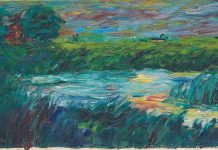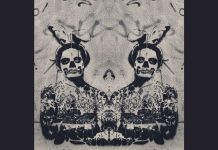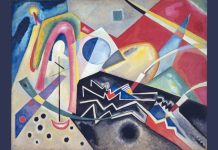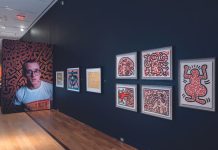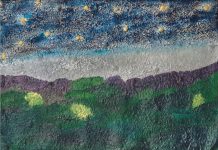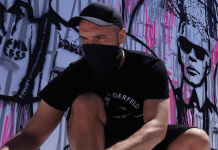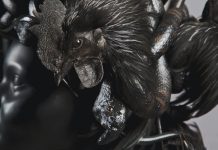This year’s Venice Biennale presents an almost unprecedented variety of artists from all over the world. Among the most beautiful and impressive works is the spectacular installation by acclaimed sculptor Lorenzo Quinn, which features six monumental pairs of human hands rising nearly 50 feet above the basin in the old shipyards of the Arsenale district.

After the worldwide success of the two large hands emerging from Canal Grande to “support” the facade of Ca’ Sagredo, the artist, son of the Oscar-winning actor Anthony Quinn, has made a spectacular comeback to his beloved Venice (both his mother and his wife were born here). Photos and videos of his 12 hands are already going viral. Not far away from Quinn’s installation, the Spazio Thetis, Arsenale Nord (public transport stop Bacini), is hosting the exhibition “Pei’s World. A Brief History of a Chinese Gallery in Italy”, curated by Luca Beatrice, which showcases the works of six international artists: Afran (Camerun), Jorge Cavelier (Colombia), Huiming Hu (China), Tannaz Lahiji (Iran), Cong Ma (China), and Giorgio Piccaia (Italy). The decision to bring together artists from different parts of the world has the purpose of putting different cultures in contact with each other.

According to its organizers, visiting the exhibition (which will run until 24 November) is a bit like climbing the tower of Babel: art is a universal language that transcends differences. A real jem is the “Piedmont Pavilion” at Combo Venezia, in Campo dei Gesuiti, Cannaregio, a provocative project conceived by Patrizia Sandretto Re Rebaudengo together with Carolyn Christov-Baargiev and curated by Marianna Vecellio. The project aims to promote Piedmontese excellence, in fields ranging from contemporary art to business to the food industry. On display are works from the collections of the Castello di Rivoli and Fondazione Sandretto Re Rebaudengo, as well as works by Piedmontese artists such as Michelangelo Pistoletto, Renato Leotta and Irene Dionisio, alongside iconic Piedmontese products like Fiat 500, a Lavazza coffee machine for use in outer space, and a bottle of Barolo from cellar of artist Pinot Gallizio, who died in Alba, in the Langhe region, in 1964.

Palazzo Dandolo Paulucci (near the San Tomà public transport stop) is housing the wonderful exhibition Atrocity Prevention Pavillion, organized by the Auschwitz Institute for Peace and Reconciliation. Massacres abound in the history of mankind, from the Holocaust to the Armenian genocide, to more recent discrimination against specific groups. This exhibition brings together six artists from countries where horrendous events have taken place (Argentina, Bosnia-Herzegovina, Canada, Indonesia, Iraqi Kurdistan and South Africa). Their works and installations expose cases of violence based on identity, inviting those in power as well as ordinary citizens to stop the violence.
At the Church of Santa Maria della Presentazione, Fondamenta Zitelle, Giudecca, Dominican artist Lidia León is having her first European exhibition, “TE VEO, ME VEO”
Curated by Roberta Semeraro and Iris Peynado, the show is supported by the LiLeón Foundation and the Italian Embassy in Santo Domingo on the occasion of the 120th anniversary of diplomatic relations between Italy and the Dominican Republic.

© Photo by Maurizio Rossi
Among the works on display is an interactive installation made of reflective aluminium sheets and resembling an airship. The installation contains a swing, which is half-hidden by a black cloth, and by using the swing you go from seeing the face of the other (Te veo) to seeing your own face (Me veo). This is only apparently a game, for it encourages people to think about social and existential issues, such as intolerance, cultural deprivation, freedom and equality.



